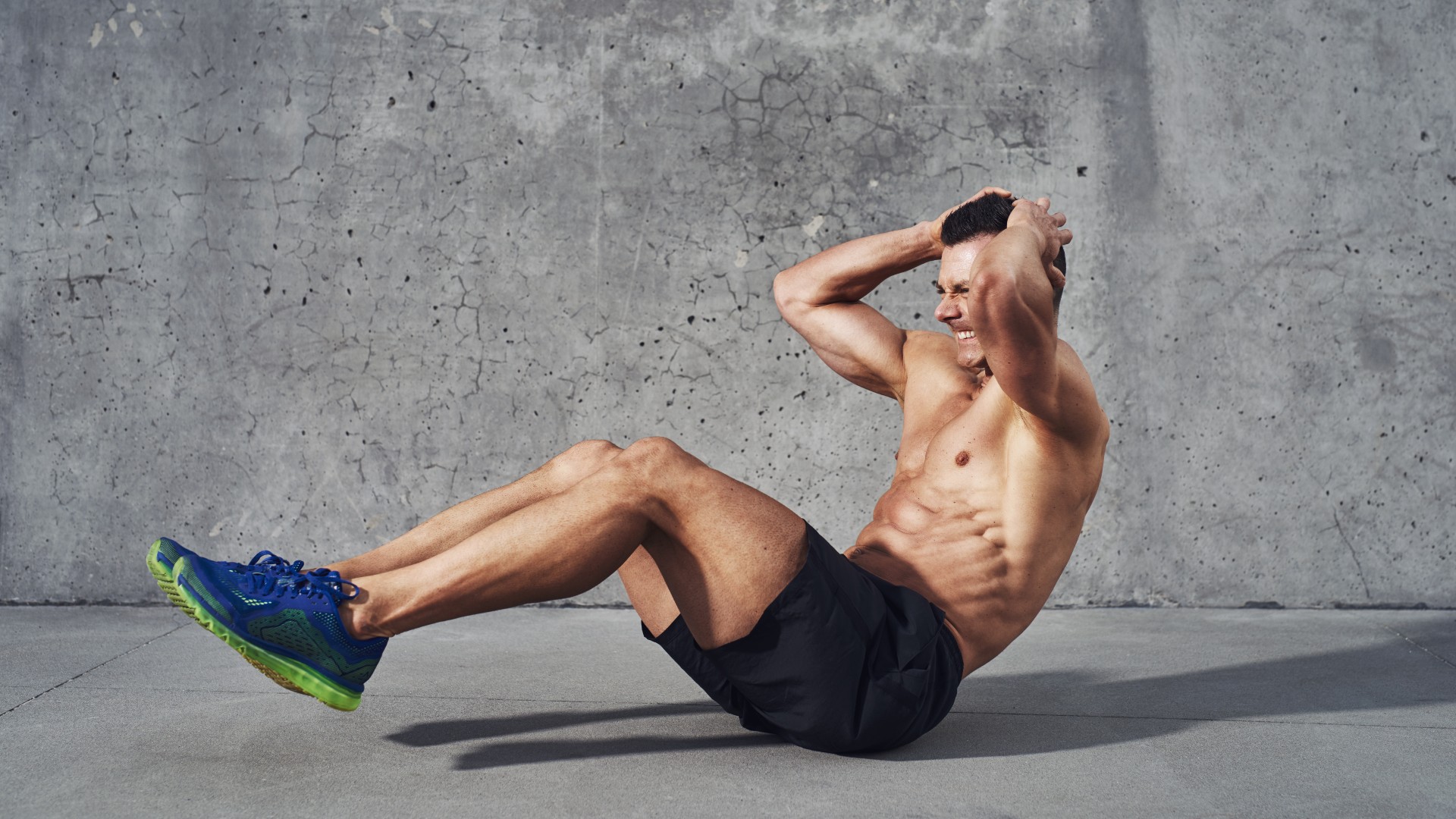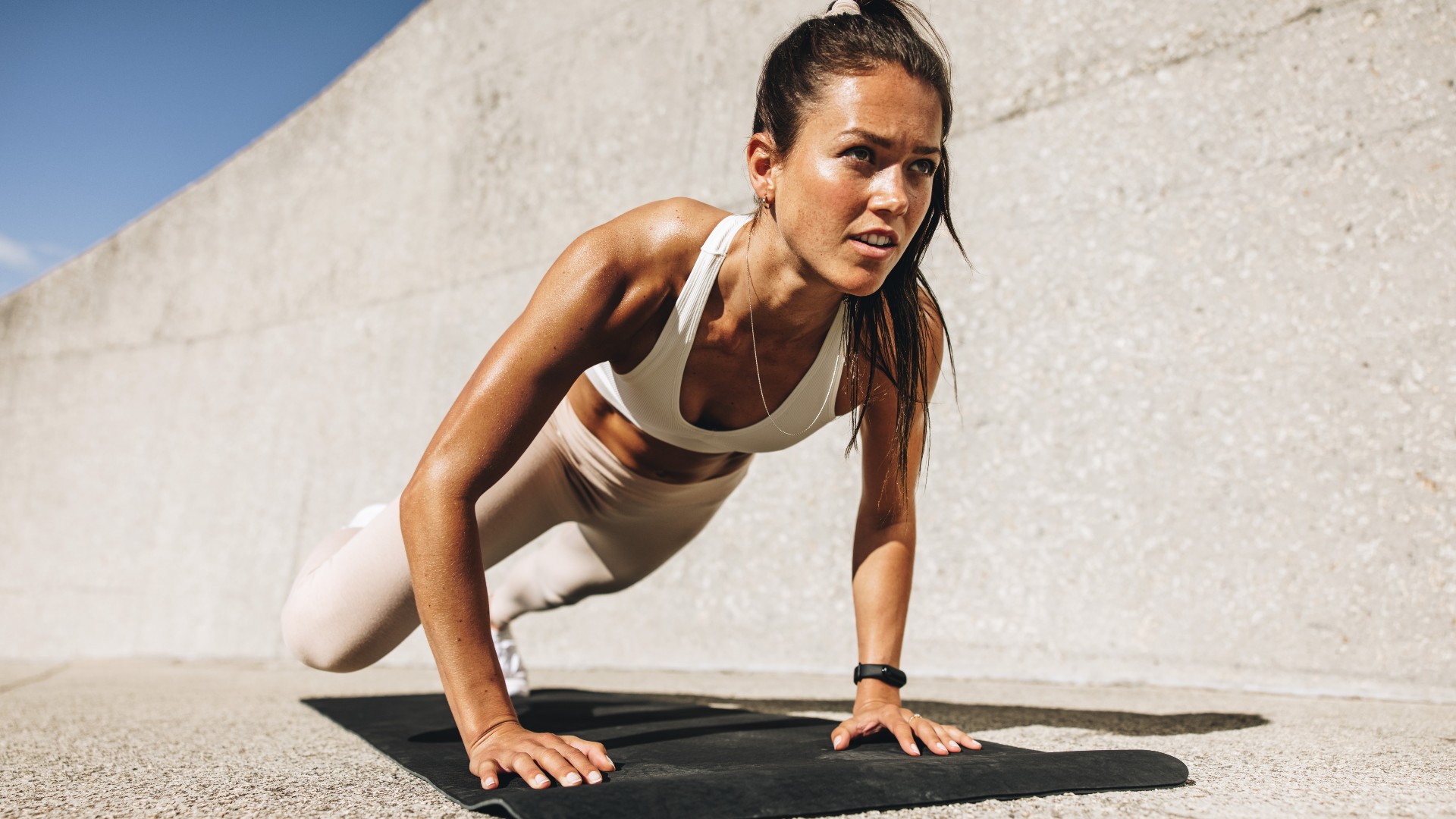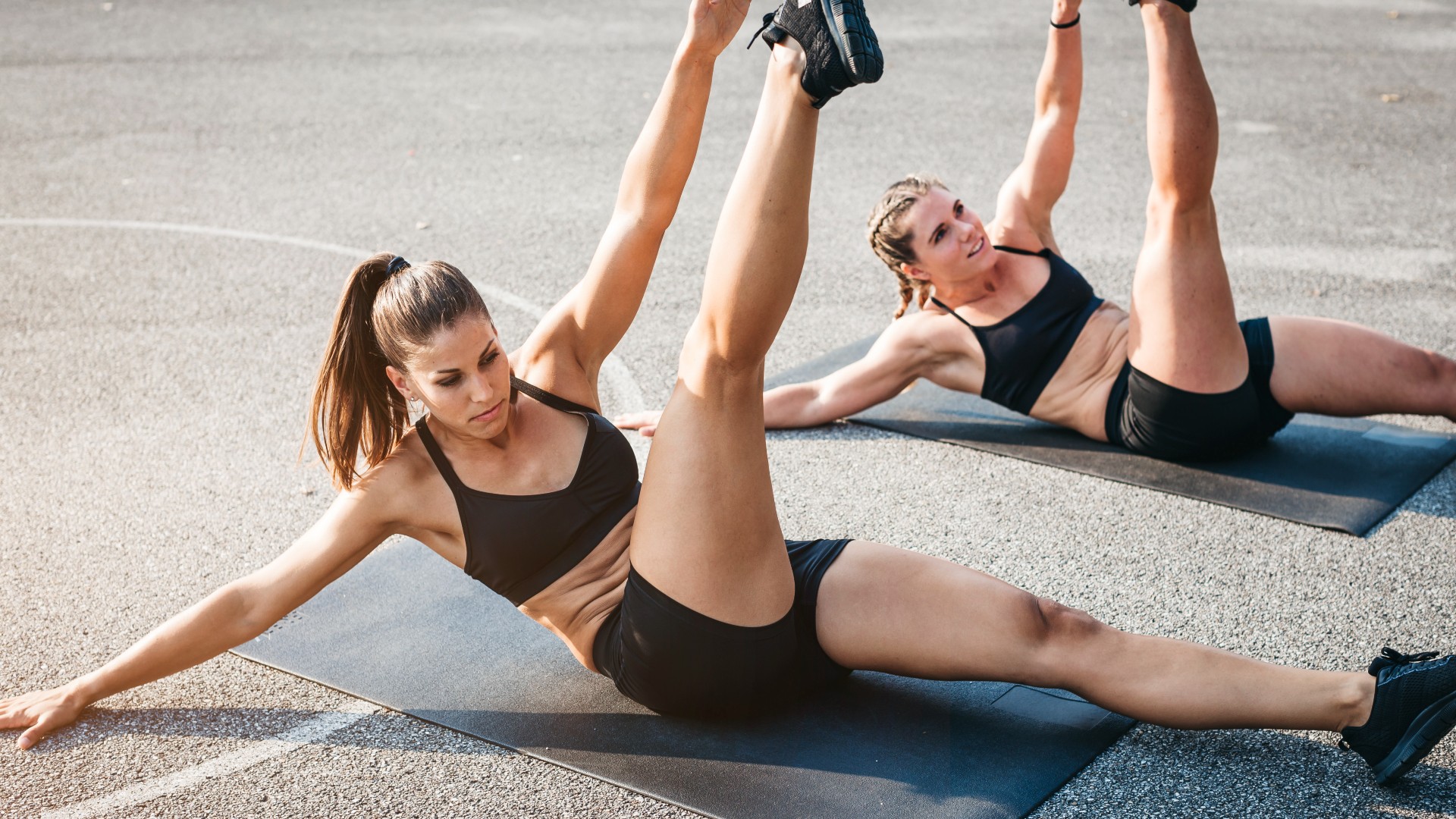
If you’re asking yourself whether it's possible to build your abs without using weights, the answer is absolutely. No pun intended, we promise.
Of course, adding weights like the best adjustable dumbbells, kettlebells and resistance bands increases intensity, but some of the best ab workouts around rely on your body weight alone.
Below, we list three ways to strengthen your abs without weights and why the methods produce results. Just remember, building abs shouldn’t just be an aesthetic goal — there are various reasons to strengthen your midsection. Here’s why and how to do it.
Should I train abs with or without weights?
Bodyweight ab workouts are hugely effective at targeting, isolating and strengthening your core muscles. Some research has shown that bodyweight training helps develop lean muscle mass and boosts coordination and muscle endurance.
Your core includes various muscle groups, not just your abs. Your external (superficial) and internal (deep stabilizing) muscles provide trunk support, produce movement and protect your spine. A strong core could help you lift heavier weights, run with better posture and prevent injuries.
These muscles wrap around your entire torso. Even your glutes, hip flexors and erector spinae (the muscles that hug your spine) are defined as core muscles. So, while sit-ups and crunches sound tempting, you could get more bang for your buck by being smarter with your ab workouts.
If you add weights, the increased intensity could help build muscle, strength and stability across your entire core musculature, but it’s not make or break. Here are other ways to strengthen your whole core without weights.
Get instant access to breaking news, the hottest reviews, great deals and helpful tips.
3 best ways to strengthen abs without weights
1. Compound exercises

We love ab workouts at Tom’s Guide, but our top tip for building core strength is adding compound exercise.
The difference between isolation vs compound exercise is simple — compound moves are defined as multi-joint, multi-muscle exercises like squats or planks, whereas isolation exercises only target one muscle group at a time, like crunches. An exercise program including compound exercises invariably recruits more muscles, and the higher effort could burn more calories.
We’ve made it even simpler to plan your workouts by rounding up the 10 best compound exercises for beginners and advanced exercisers. These can be done with or without weights and demand plenty of core activation to support and coordinate your torso as you move.
You could also improve your chances of burning calories by combining these moves with high-intensity circuits, which activate the EPOC process — when your body consumes more oxygen after a workout, resulting in an elevated metabolism.
2. Calisthenics

Calisthenics is a fancy way of saying bodyweight exercise. It sits in the functional training camp because exercises, such as sit-ups or pull-ups, closely resemble everyday movements.
Calisthenics can include gymnastics, which is why you’ll find it incorporated into CrossFit and Hyrox workouts — think of a muscle-up or planche (a floating plank), for example. But what does this have to do with core strength?
Functional bodyweight exercises are one of the best ways to develop your core without weights. Recruiting only the weight of your body, you'll call upon your core muscles to stay stable and mobile during each move. You could also improve mobility and build functional muscle and stronger bones and joints.
If you’re new to weightlifting, full-body bodyweight exercises heavily recruit core muscles, which helps build the foundational strength needed for lifting weights. Stronger bones, joints and muscles means you’ll move better with less chance of injury even as you age. We love this 10-minute bodyweight workout if you need inspiration.
3. Progressive overload
If you don’t need weights to build core strength, then how do you add intensity?
You’ll need versatility to challenge your ab muscles to adapt and grow. The last few reps of any exercise should feel tough to finish, and if that’s not the case, here are a few ways to increase intensity.
The progressive overload method doesn’t just mean increasing weight. You could slow the tempo, increase sets and reduce rest to make a core exercise harder.
Supersets are an asset for core workouts. Combine two exercises without rest between, then rest after each set. This Arnold Schwarzenegger workout works well and torches muscles all over using cluster sets. Supersets include two exercises, but cluster or giant supersets combine three or more moves.

Another benefit of supersets is that it taps into another method called time under tension, which means working muscles for longer through a range of motion. For example, try slowing down a sit-up by counting to four as you lower your body and back up to four as you sit up. The extra effort fatigues muscles, and we know that muscles need challenges to grow.
A great way to combine the above principles is by using a complex. Complexes involve performing each exercise in sequence, one after another. You won’t rest until you’ve completed the series, and you can also add reps each round. Typically, complexes involve weights — like this 5-move barbell complex workout — but you can use them during bodyweight core workouts too, and the above barbell complex can be used as inspiration.
Can you build abs without weights?
It’s worth noting that building strength and muscle aren’t the same thing, so you’ll need to determine whether your goal is to build definition or the strength of those muscles. You can learn more about hypertrophy vs strength training here.
If muscle definition is the goal, then body fat percentage matters. Imagine you’ve spent hours cleaning your windows and then closed the curtains — you can’t see the work, but you know you’ve done it.
Regular exercise (including cardio and resistance training) and your diet play pivotal roles in how much fat you store, but so do other factors. High cortisol (stress) levels and poor sleep could dampen your workout efforts. Here are 5 reasons you can’t see your abs yet, despite working out, and how to overcome them.
Should you do abs every day?
As we mentioned, you don’t need weights to develop your core, but you do need consistency. Training regularly (at least several times a week) matters, but ensure you add enough rest for muscles to recover.
One way to stay active on rest days is by increasing your daily NEAT — adding opportunities to stand up or move throughout the day; this could boost your metabolism and prevent sedentary habits that lead to weight gain.
We don’t recommend daily targeted ab workouts. Your abdominal muscles, like all muscles, need time to repair. That’s when full-body sessions using compound exercises come in handy.
More from Tom's Guide
- Best plank variations to try this summer
- 5 best ways to build muscle without lifting heavier weights
- Forget crunches — these 5 yoga exercises build a super strong core.

Sam Hopes is a level 3 qualified trainer, a level 2 Reiki practitioner and fitness editor at Tom's Guide. She is also currently undertaking her Yoga For Athletes training course.
Sam has written for various fitness brands and websites over the years and has experience across brands at Future, such as Live Science, Fit&Well, Coach, and T3.
Having coached at fitness studios like F45 and Virgin Active and personal trained, Sam now primarily teaches outdoor bootcamps, bodyweight, calisthenics and kettlebells.
She also coaches mobility and flexibility classes several times a week and believes that true strength comes from a holistic approach to training your body.
Sam has completed two mixed doubles Hyrox competitions in London and the Netherlands and finished her first doubles attempt in 1:11.
